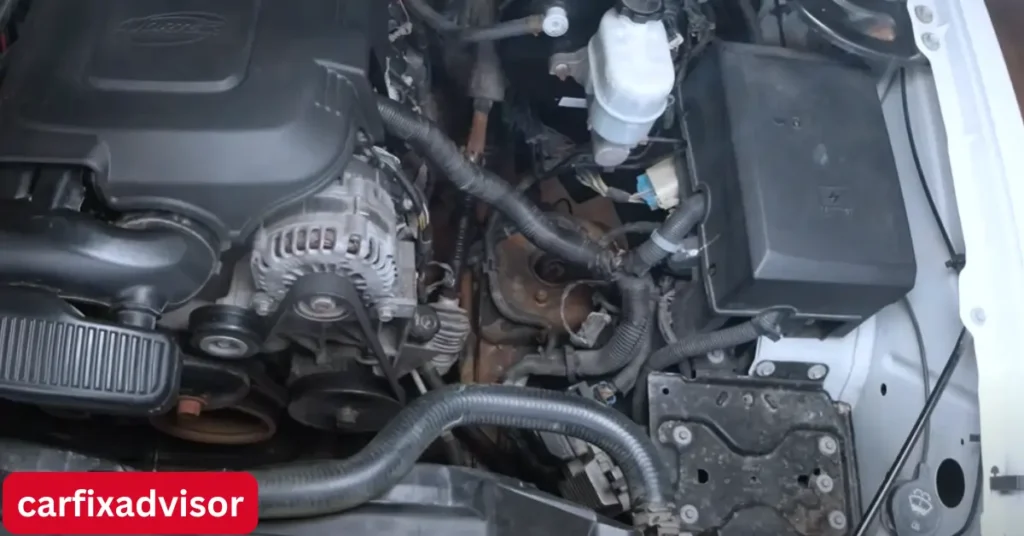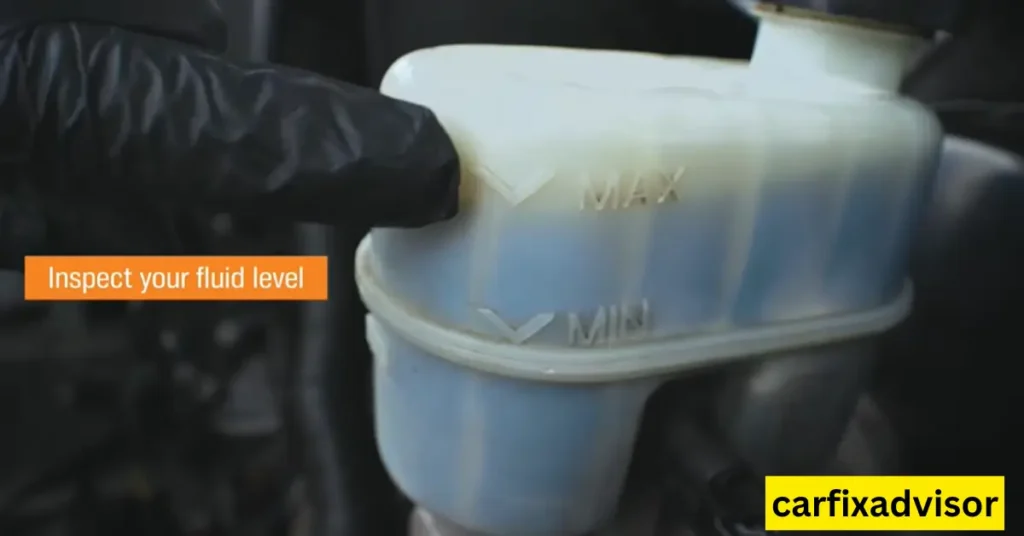Brake fluid is a vital component of your car’s braking system, ensuring smooth and safe operation of the brakes. Without proper brake fluid, your braking system can fail, potentially leading to dangerous situations on the road. While maintaining the right brake fluid level is essential, one question that often arises among car owners is, Can You Add Brake Fluid While Car is Hot?
In this article, we’ll delve into whether it’s safe to add brake fluid to a hot car and the best practices for maintaining your brake fluid levels. Understanding how brake fluid works, the risks involved in adding it to a hot engine, and the proper way to handle brake fluid maintenance will help keep your vehicle safe and functioning efficiently.
Why is brake fluid important?
Brake fluid plays an essential role in the braking system of your vehicle. It transfers force from the brake pedal to the brake components, allowing the brakes to slow or stop the car. It also lubricates the system to prevent wear and tear.
Key Functions of Brake Fluid:
Transmitting Force: When you press the brake pedal, brake fluid transfers the force to the brake calipers, causing the brakes to engage.
Preventing Corrosion: Brake fluid also contains additives that protect the brake components from rust and corrosion.
Maintaining Consistent Performance: Brake fluid ensures that the braking system performs consistently across a wide range of temperatures.
For your brake system to work effectively, it’s crucial that the fluid is maintained at the proper level and condition. If the fluid level is low or the fluid is contaminated, the brakes may fail, leading to a dangerous situation on the road.
Can You Add Brake Fluid While Car is Hot?
The short answer is no; you should not add brake fluid to a hot car. While it may seem tempting to top off the brake fluid immediately after a drive, doing so when the car is hot can have adverse effects on the braking system. Here’s why:
1. Brake Fluid is Sensitive to Temperature
High Temperature Sensitivity: Brake fluid operates in a system that can reach high temperatures due to friction during braking. When the brake fluid is exposed to high temperatures, its properties can change. Adding brake fluid to a hot system can result in boiling or vaporization of the fluid, which compromises its effectiveness and could lead to brake failure.
Vapor Lock: When the brake fluid boils, it forms gas bubbles, leading to a condition known as vapor lock. Vapor lock can cause the brake pedal to feel soft or spongy, which can significantly reduce braking performance and cause a dangerous driving situation.
2. Risk of Burns and Injury
Hot Brake Fluid: Brake fluid can reach extremely high temperatures during use, especially if the car has just been driven or the braking system is under heavy load. Opening the reservoir cap or filling the fluid while the system is hot can result in splashing of hot fluid, causing burns or injury.
Pressure Buildup: The brake fluid system is pressurized, and opening the cap while the system is hot can cause fluid to spill out rapidly, potentially leading to burns or damage to surrounding components.
3. Temperature Shock to Brake Components
Thermal Shock: The brake system, especially components like the master cylinder and brake lines, may be very hot after driving. Adding cold brake fluid to the system can lead to thermal shock, causing damage to the system. This is similar to putting a hot metal object into cold water, which can lead to cracks or warping in metal parts.
How to Safely Add Brake Fluid
If your brake fluid is low, it’s important to top it off to ensure the safety and functionality of your braking system. However, this should be done with caution, especially after a drive. Here are the steps to follow to safely add brake fluid to your vehicle:
1. Allow the Car to Cool Down
Wait Before Adding Brake Fluid: After driving, especially if the car has been under heavy braking or the engine is hot, wait for at least 20-30 minutes to allow the braking system to cool down. The cooler the engine and brake components, the safer it will be to add brake fluid without causing damage to the system.
Check the Temperature: If the vehicle is still hot, avoid opening the brake fluid reservoir. Touch the engine or hood to gauge the temperature—if it’s too hot to touch comfortably, wait a bit longer before attempting to add brake fluid.
2. Use the Correct Brake Fluid
Check Manufacturer Recommendations: Always use the type of brake fluid recommended by your vehicle’s manufacturer. Most vehicles use DOT (Department of Transportation) brake fluid, with different types such as DOT3, DOT4, or DOT5.5, each designed for specific temperature ranges.
Avoid Mixing Fluids: Do not mix different types of brake fluid, as it can lead to contamination or reduced performance. Stick with the type specified in your owner’s manual.
3. Check Fluid Levels and Inspect the System
Inspect for Leaks: Before adding brake fluid, check the brake system for any visible leaks around the master cylinder, brake lines, or wheels. Leaks can cause the brake fluid to drop quickly and, if left unaddressed, can lead to complete brake failure.
Use a clean funnel: When adding fluid, make sure you use a clean funnel to avoid contamination. Any dirt or debris entering the brake fluid reservoir can damage the braking system.
4. Fill the Reservoir Slowly
Avoid Overfilling: When topping off the brake fluid, pour slowly and ensure that you do not overfill the reservoir. Overfilling can cause fluid to spill out, potentially damaging other components in the engine bay or leading to dangerous situations.
Check the Brake Fluid Level: Make sure the brake fluid is at the recommended level. There’s typically a “min” and “max” marking on the side of the reservoir. Don’t let the fluid drop below the minimum level, as this can cause air to enter the brake lines and impair braking performance.
5. Secure the Cap Properly
Tighten the Reservoir Cap: After adding the brake fluid, make sure the cap is securely tightened to prevent contamination or leaks. Always check that the cap is fully closed before driving the car again.
When Should You Add Brake Fluid?
While it’s important to top off brake fluid when necessary, you should not need to add brake fluid too often. If you find yourself regularly adding brake fluid, there may be an underlying issue that needs attention. Here’s when you should check and add brake fluid:
When Brake Fluid is Low: If the brake fluid level is near the minimum mark or lower, it’s time to add brake fluid. Low brake fluid can lead to reduced braking performance and could indicate a leak in the brake system.
After Replacing Brake Components: If you’ve had your brake pads, rotors, or other components replaced, it’s a good idea to check the brake fluid level to ensure it’s sufficient.
If You Notice Soft or Spongy Brakes: A soft or spongy brake pedal can be a sign of air in the brake lines or low brake fluid. If the fluid level is low, top it off and check for leaks in the brake system.
During Regular Maintenance: It’s a good idea to check the brake fluid level during regular car maintenance to ensure everything is in good working condition.
 Can You Add Brake Fluid While Car is Hot
Can You Add Brake Fluid While Car is Hot
Common Mistakes to Avoid When Adding Brake Fluid
Adding brake fluid to your vehicle is a relatively simple task, but if not done correctly, it can lead to serious issues with your braking system. To ensure that you add brake fluid safely and effectively, here are some common mistakes to avoid:
1. Adding the Wrong Type of Brake Fluid
Mistake: Using the wrong type of brake fluid can severely damage your brake system. Each vehicle requires a specific type of brake fluid, typically based on the braking system’s design and the temperature at which the fluid operates.
Solution: Always check your car’s manual to determine the correct type of brake fluid for your vehicle. Common types include DOT3, DOT4, DOT5, and DOT5.1, each with different properties suited to various braking systems.
2. Overfilling the Brake Fluid Reservoir
Mistake: Overfilling the brake fluid reservoir can lead to fluid spillage when the brake system heats up, and could potentially cause a mess or damage components under the hood.
Solution: Be sure to check the “min” and “max” levels on the brake fluid reservoir and avoid overfilling. If you’re unsure about the exact amount to add, it’s safer to underfill slightly than to overfill.
3. Ignoring Fluid Leaks
Mistake: If your brake fluid levels are dropping frequently, it might indicate a leak somewhere in the brake system. Ignoring this can lead to low fluid levels and impaired braking performance.
Solution: If you find that your brake fluid levels are consistently low, inspect the brake system for leaks around brake lines, master cylinders, or calipers. If you can’t find the leak yourself, take the car to a mechanic.
4. Not Tightening the Cap Properly
Mistake: After adding brake fluid, failing to securely tighten the reservoir cap can allow moisture to enter the system, which can lead to corrosion and degraded brake performance.
Solution: Always ensure that the brake fluid cap is tightly secured after you add fluid. This prevents contaminants from entering the brake system and ensures the fluid maintains its effectiveness.
5. Not Checking Brake System Condition
Mistake: Some car owners top off brake fluid without checking the overall condition of the brake system. This is a missed opportunity to inspect brake lines, pads, rotors, and fluid quality.
Solution: Use every brake fluid top-up as an opportunity to inspect your brake system. Look for any signs of wear, corrosion, or leaks that could lead to performance issues down the line.
 Can You Add Brake Fluid While Car is Hot
Can You Add Brake Fluid While Car is Hot
What to Do If You Notice Issues After Adding Brake Fluid
If you’ve added brake fluid but still experience issues with your brakes, such as a soft brake pedal or unusual noises, you may need to take further action. Here’s what to do if problems persist:
1. Check for Air in the Brake Lines
If your brake pedal feels spongy or soft after adding fluid, it could indicate air in the brake lines. Air in the lines can prevent proper fluid transfer, making your brakes less responsive.
Solution: Bleed the brake lines to remove any air. This can be done with a brake bleeder kit or by a mechanic if you’re not familiar with the process.
2. Inspect Brake Pads and Rotors
Worn brake pads or damaged rotors can also affect braking performance, even if the fluid level is correct. If you hear squeaking or grinding sounds, this could be a sign that the brake pads need replacing.
Solution: Inspect the brake pads for wear and the rotors for any deep grooves. If either is worn down, they should be replaced immediately.
3. Look for Leaks
Leaks are a common reason for low brake fluid levels. Brake fluid leaks can occur around the master cylinder, brake lines, or calipers.
Solution: Check the brake lines, calipers, and the master cylinder for any visible signs of leakage. If you find a leak, it’s best to have the system repaired immediately, as continued leakage can lead to complete brake failure.
4. Seek Professional Help
If you’re unsure of what the problem is or if you continue to experience brake issues after topping off the fluid, it’s best to consult a professional mechanic. Brake systems are complex, and improper maintenance or repair can lead to dangerous driving conditions.
Solution: Take your vehicle to a qualified mechanic for a thorough inspection and repair if necessary. Ensuring the brake system is fully functional is vital to your safety on the road.
How Often Should You Check Brake Fluid Levels?
Checking brake fluid levels is a simple but crucial part of vehicle maintenance. Here’s how often you should check your brake fluid:
1. Monthly Checks
Ideally, you should check your brake fluid once a month, especially if you notice any changes in braking performance or if you’ve been driving under challenging conditions, such as heavy traffic or hilly terrain.
2. Before Long Trips
Before embarking on a long trip, take a few minutes to check the brake fluid levels. This ensures you won’t run into issues with brake performance while on the road.
3. When You Notice Brake Issues
If your brake pedal feels soft, spongy, or unresponsive, or if you hear any unusual noises when braking, it’s time to check the brake fluid levels and investigate further.
4. During Regular Vehicle Maintenance
Brake fluid should be checked during routine vehicle maintenance, usually every 10,000 to 15,000 miles or as recommended in your owner’s manual.
Conclusion: Can You Add Brake Fluid While Car is Hot
While adding brake fluid to your car when it’s hot may seem like a quick fix, it’s not recommended due to the risks involved, such as vapor lock, burns, and potential thermal shock to the brake components. It’s always better to wait for the car to cool down before adding fluid, ensuring that your braking system remains in optimal condition.
Regular brake fluid checks and maintenance are crucial for safe driving. If you notice any issues with your braking performance, address them immediately by inspecting your brake fluid, checking for leaks, or visiting a mechanic if necessary.
By following the proper steps and guidelines, you can ensure that your vehicle’s braking system remains reliable and safe, keeping you secure on the road.
